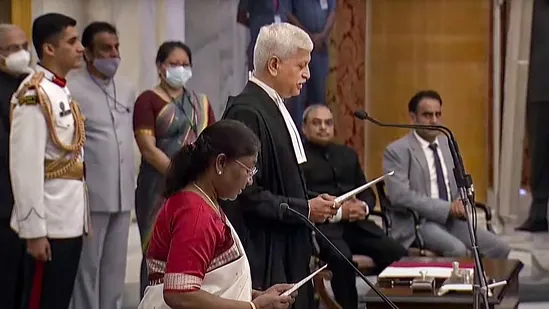Justice Uday Umesh Lalit was on Saturday sworn in as the 49th Chief Justice of India. President Droupadi Murmu administered the oath at a brief ceremony held at the Rashtrapati Bhavan. Vice President Jagdeep Dhankhar, Prime Minister Narendra Modi and Union ministers were also present at the ceremony. Moreover, Justice Lalit’s predecessor, Justice N.V. Ramana, was also present.
However, the 49th Chief Justice of India, Justice Uday Umesh Lalit, is facing a tenure that is expected to be a race against time with less than two months till retirement on November 8. Especially considering the busy court calendar during the holidays.
The court is expected to be in session for a full month in September, but only for 14 days in October. However, cases can be heard during the Dussehra and Diwali holidays if the CJI wants to and the other justices cooperate. During the 2015 court’s summer recess, Chief Justice Khehar (as he was known at the time) heard the National Judicial Appointments Commission (NJAC) case.
Some of Chief Justice Lalit’s remarks have given the impression that he wants to face the Supreme Court’s problems head-on. The new CJI has given hints about his plans during the last few days. As an example, on his first day of work as the chief judge, he scheduled the hearing of 25 Constitution Bench cases beginning on August 29. These include complaints about WhatsApp’s privacy policies, the Constitution (One Hundred and Third Amendment) Act, 2019, which included provisions for reservations for economically disadvantaged sectors, and jallikattu-related petitions.
Between March and May 2021, a Constitution Bench last met to discuss the Maratha Reservation case. During the time of the former Chief Justice Ramana, not a single Constitution Bench was established.
Additional assurances from Chief Justice Lalit include the maintenance of at least one Constitution Bench throughout the year.
To prevent lawyers from being kept in the dark regarding the outcome of their cases, the top judge has also promised transparency in the listing of cases. He has assured attorneys that they will have the chance to speak with the relevant Bench directly to request an early hearing in matters requiring urgent relief, such as bail pleas.
“I want all the 15 Benches functioning,” Chief Justice Lalit said.
By adding extra Benches, the CJI has already started to resolve the serious backlog of over 71,000 cases at the Supreme Court. He will soon have 15 benches with two judges each operating every Tuesday through Thursday.
It remains to be seen, though, whether he will use his brief term to designate judges to the supreme court. Justice R.M. Lodha, who served as India’s 41st Chief Justice for six months, was able to effectively initiate the appointment of two senior attorneys immediately to the Supreme Court bench, one of which was Justice Lalit.
However, Chief Justice Lalit may also leave it to Justice D.Y.
Justice Chandrachud, who has a tenure of 24.5 months and would succeed him based on seniority, is in charge of making nominations.
The Supreme Court currently has 30 judges, which is four fewer than the entire sanctioned strength of 34.
The controversy about giving Chief Justices of India a fixed term of office is highlighted by Justice Lalit’s case. They might use this information to organise and carry out reforms. In actuality, Justice Chandrachud would serve as Chief Justice of India for the longest period among the six to come. Attorney B.V.
Justice BV Nagarathna, who is in line to be India’s first woman Chief Justice, would have a tenure of only a little over a month as a top judge.
Chief Justice Lalit, when asked by The Hindu in a recent interview about extending the retirement age of judges from 65 years to 67 years, and fixity of tenure, said it was a matter of policy for the lawmakers to decide.












